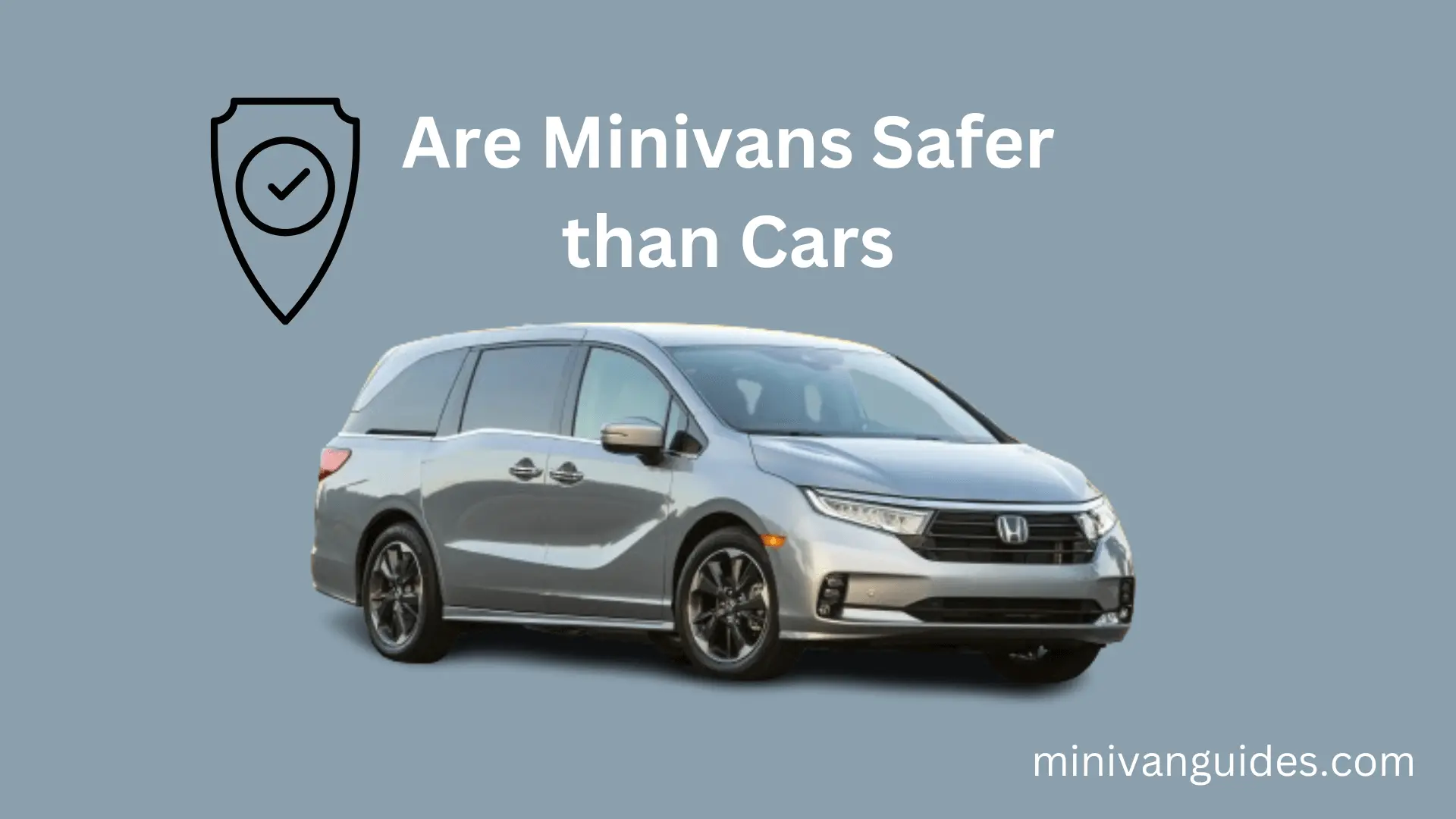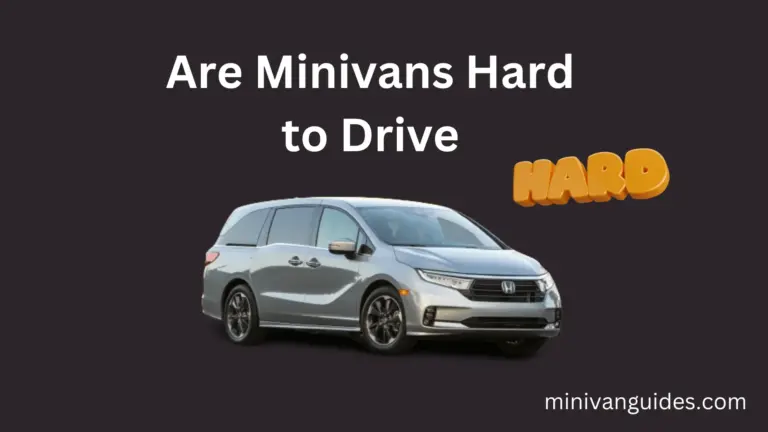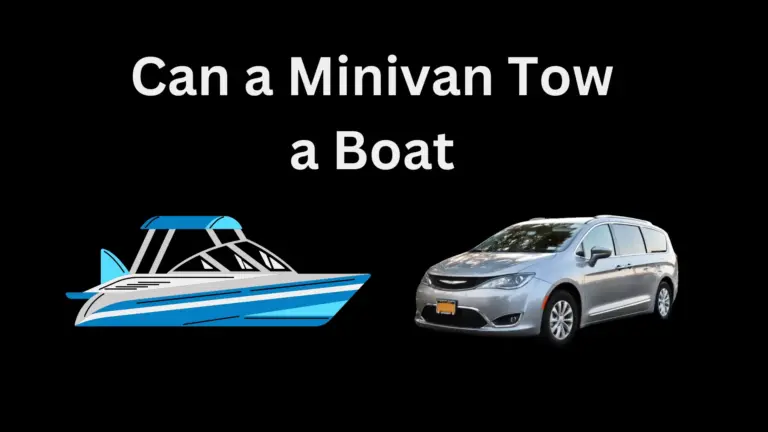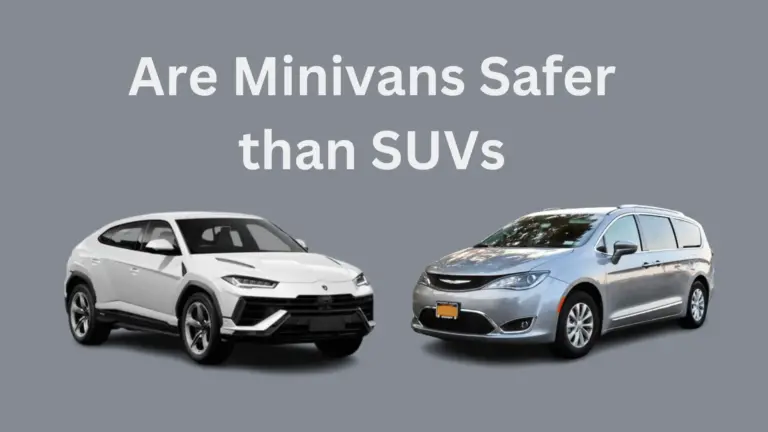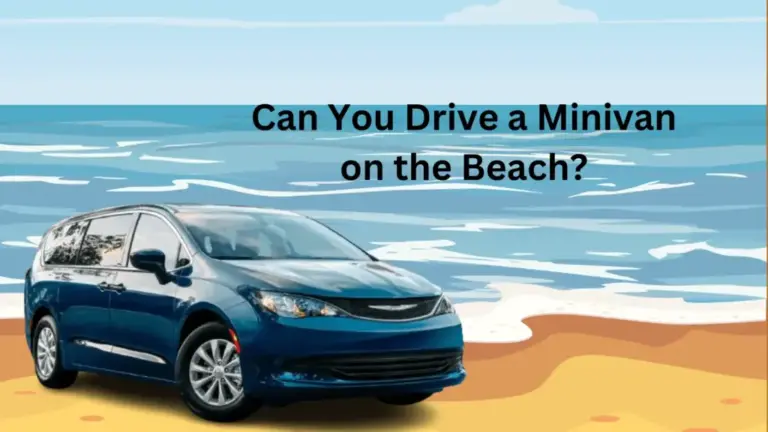Are Minivans Safer than Cars
When it comes to choosing a vehicle for your family, safety is often a top priority. The debate over whether minivans are safer than cars has been ongoing for years. In this article, we will delve into the various aspects of safety to determine which type of vehicle offers better protection for passengers.
Understanding Safety Ratings
What Are Safety Ratings?
Safety ratings are evaluations conducted by organizations such as the National Highway Traffic Safety Administration (NHTSA) and the Insurance Institute for Highway Safety (IIHS) to assess the safety of vehicles. These evaluations offer customers important details concerning a car’s ability to withstand crashes and its safety characteristics.
How Are Safety Ratings Determined?
Safety ratings are determined through a series of crash tests and evaluations. These tests assess various factors such as frontal and side-impact collisions, rollover resistance, and the effectiveness of safety features like airbags and seat belts. Based on the results, vehicles are assigned a rating ranging from one to five stars or labeled as “Good,” “Acceptable,” “Marginal,” or “Poor.”
Safety Features in Minivans and Cars
Common Safety Features in Minivans
Minivans are equipped with a range of safety features designed to protect occupants in the event of a collision. These features may include:
- Multiple airbags
- Antilock braking system (ABS)
- Electronic stability control (ESC)
- Blind-spot monitoring
- Rearview camera
- Forward collision warning
- Automatic emergency braking
Common Safety Features in Cars
Similarly, cars come equipped with advanced safety features aimed at minimizing the risk of injury in accidents. Some of the common safety features found in cars include:
- Front and side airbags
- ABS
- ESC
- Collision avoidance systems
- Lane departure warning
- Adaptive cruise control
- Parking assist
Comparative Safety Analysis
When evaluating the safety of minivans versus cars, it’s crucial to consider various factors that impact their performance in crash scenarios and their ability to protect occupants.
Crash Test Results
Crash tests conducted by reputable organizations such as the National Highway Traffic Safety Administration (NHTSA) and the Insurance Institute for Highway Safety (IIHS) provide valuable insights into the safety performance of vehicles. These tests simulate different types of collisions, including frontal, side-impact, and rollover scenarios, to assess how well vehicles protect occupants.
Minivans and cars generally perform admirably in crash tests, meeting or exceeding safety standards set by regulatory agencies. However, minivans often demonstrate superior performance in tests simulating frontal and side-impact collisions. This advantage can be attributed to their larger size and heavier weight, which contribute to enhanced crashworthiness and better energy absorption during impact.
Impact of Vehicle Size
The size of a vehicle plays a significant role in determining its safety performance. In collisions with other vehicles or fixed objects, larger vehicles like minivans have a distinct advantage over smaller cars. The increased mass and structural integrity of minivans provide them with better protection and stability, reducing the likelihood of severe injuries to occupants.
Moreover, the larger crumple zones in minivans allow for more effective energy absorption during a crash, mitigating the forces transmitted to the vehicle’s occupants. This additional space and structural reinforcement contribute to improved crashworthiness and occupant protection in minivans compared to cars.
Occupant Protection
Minivans are specifically designed with passenger safety in mind, offering a range of features and design elements aimed at enhancing occupant protection. Their spacious interiors provide ample room for occupants, reducing the likelihood of injuries caused by impact forces.
Furthermore, minivans often feature higher seating positions than cars, which can contribute to better visibility for drivers and passengers alike. This elevated seating position not only improves the driver’s view of the road but also enhances the effectiveness of seat belts and airbags in protecting occupants during a crash.
Additionally, minivans are equipped with advanced safety technologies such as multiple airbags, electronic stability control (ESC), and active safety systems like blind-spot monitoring and automatic emergency braking. These features work in tandem to minimize the risk of injury in various driving scenarios, further solidifying minivans’ reputation for superior occupant protection.
You should also visit: Are Minivans Good for Towing?
Factors Influencing Safety
Driving Conditions
Safety is also influenced by external factors such as driving conditions. While minivans may offer better protection in certain types of accidents, adverse weather conditions and poor road conditions can increase the risk of accidents regardless of the type of vehicle.
Vehicle Maintenance
Proper vehicle maintenance is essential for ensuring optimal safety performance. Regular inspections and servicing help identify potential issues with safety systems and ensure that the vehicle is in good working condition.
Driver Behavior
Ultimately, driver behavior plays a crucial role in vehicle safety. Responsible driving habits such as obeying traffic laws, avoiding distractions, and practicing defensive driving can significantly reduce the risk of accidents and injuries.
Real-World Data and Statistics
Several studies have analyzed real-world crash data to compare the safety of minivans and cars. While results may vary depending on the study parameters, many findings suggest that minivans have a slightly lower risk of injury in accidents compared to cars.
Experts in the field of automotive safety often weigh in on the debate regarding minivans versus cars. While opinions may vary, many experts agree that both types of vehicles offer adequate safety protection for passengers and that other factors such as vehicle maintenance and driver behavior are equally important.
Cost Considerations
In addition to safety, cost is another important factor to consider when choosing between a minivan and a car. Minivans typically have a higher upfront cost and may incur higher operating expenses due to their larger size and fuel consumption.
Conclusion
In conclusion, both minivans and cars offer a high level of safety for passengers, thanks to advanced safety features and rigorous crash testing. While minivans may have certain advantages in terms of occupant protection and crashworthiness, other factors such as driving conditions, vehicle maintenance, and driver behavior also play significant roles in ensuring safety on the road.
